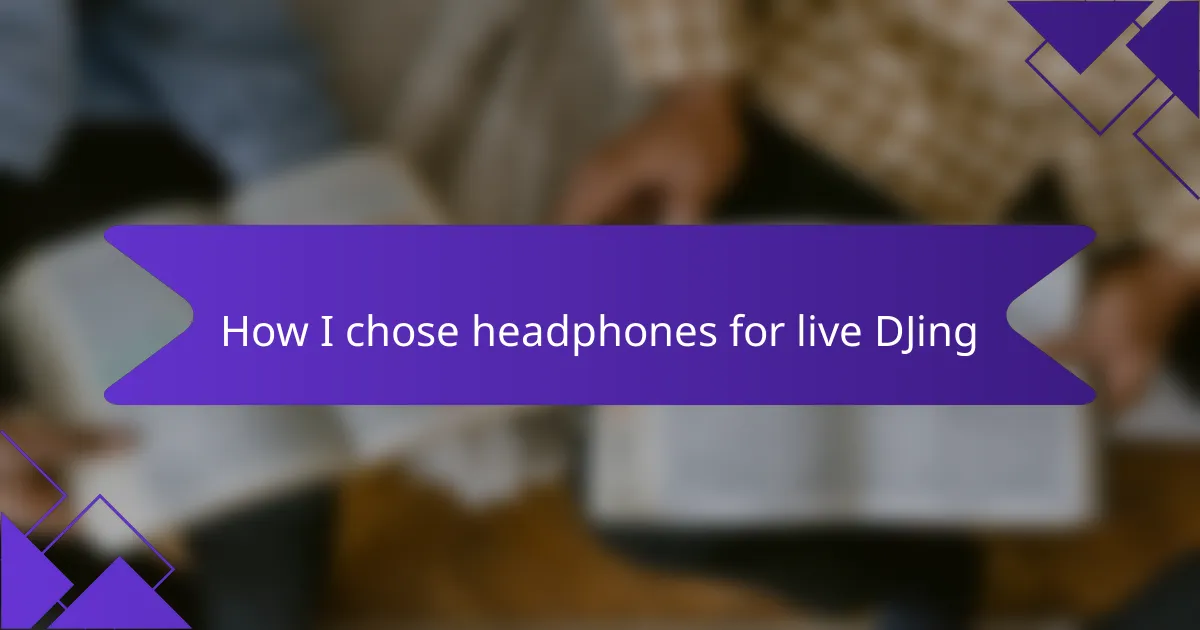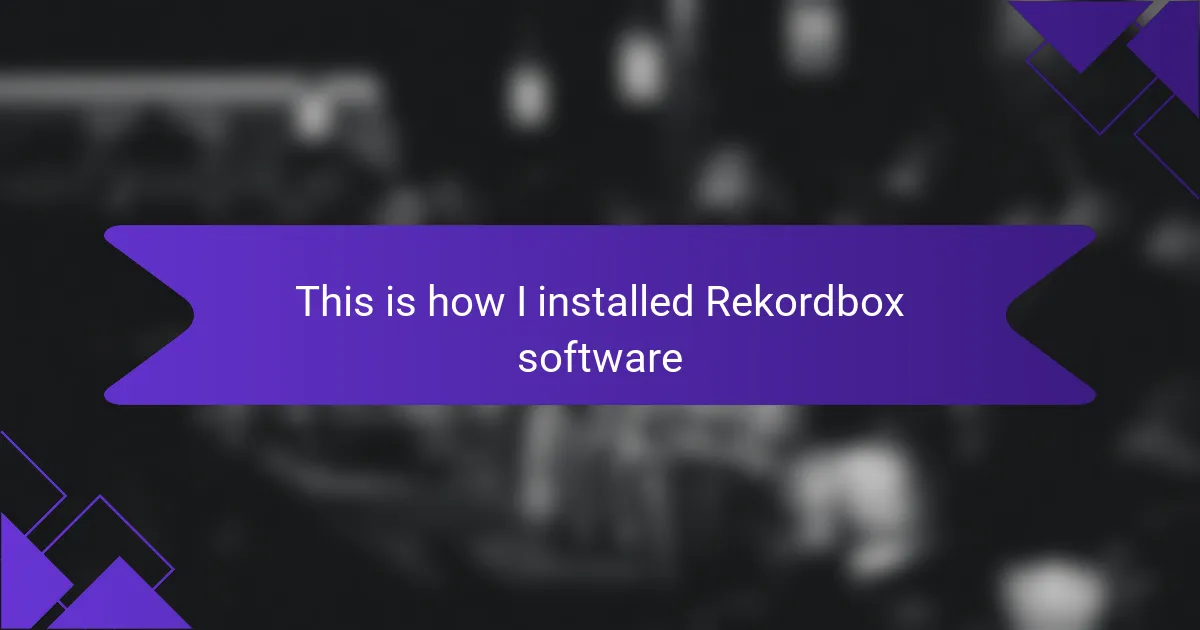Key takeaways
- DJ entertainment is about creating memorable experiences by connecting with the crowd and reading their energy.
- Understanding DJ equipment, like mixers and turntables, is crucial for delivering dynamic performances.
- Careful music selection and planning are vital for maintaining energy and engaging the audience effectively.
- Adaptability and preparation are key; being in tune with the audience allows for spontaneous and memorable moments.
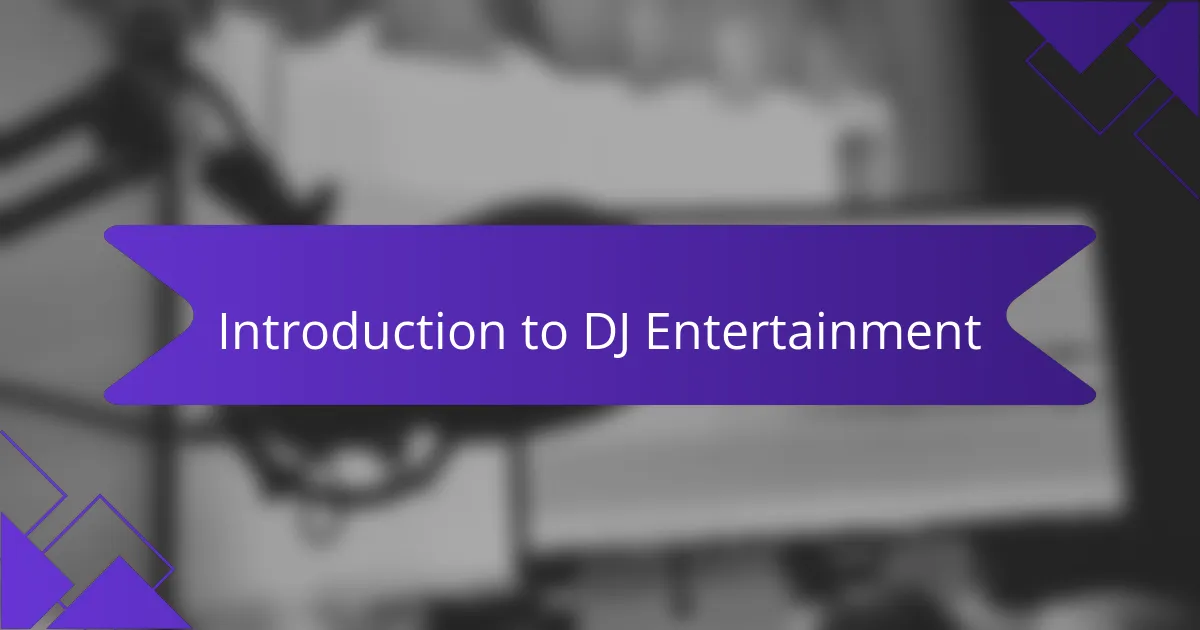
Introduction to DJ entertainment
DJ entertainment transforms any event into a unique experience. I remember my first time spinning records at a friend’s birthday party; the moment I saw people dancing and having fun, I felt a rush of joy. It was more than just playing music; it was about creating memories.
The art of DJing goes beyond selecting tracks. It’s about reading the crowd, understanding their energy, and connecting with them on a deeper level. Have you ever been at a party where the music made you lose track of time? That’s the magic that DJ entertainment brings, elevating the atmosphere and creating an unforgettable vibe.
With every beat and transition, a skilled DJ weaves a narrative. I often think of my sets as a journey, where each song builds upon the last, guiding listeners on an emotional ride. Whether it’s a wedding or a club night, this ability to craft a seamless experience is what truly distinguishes a good DJ from a great one.
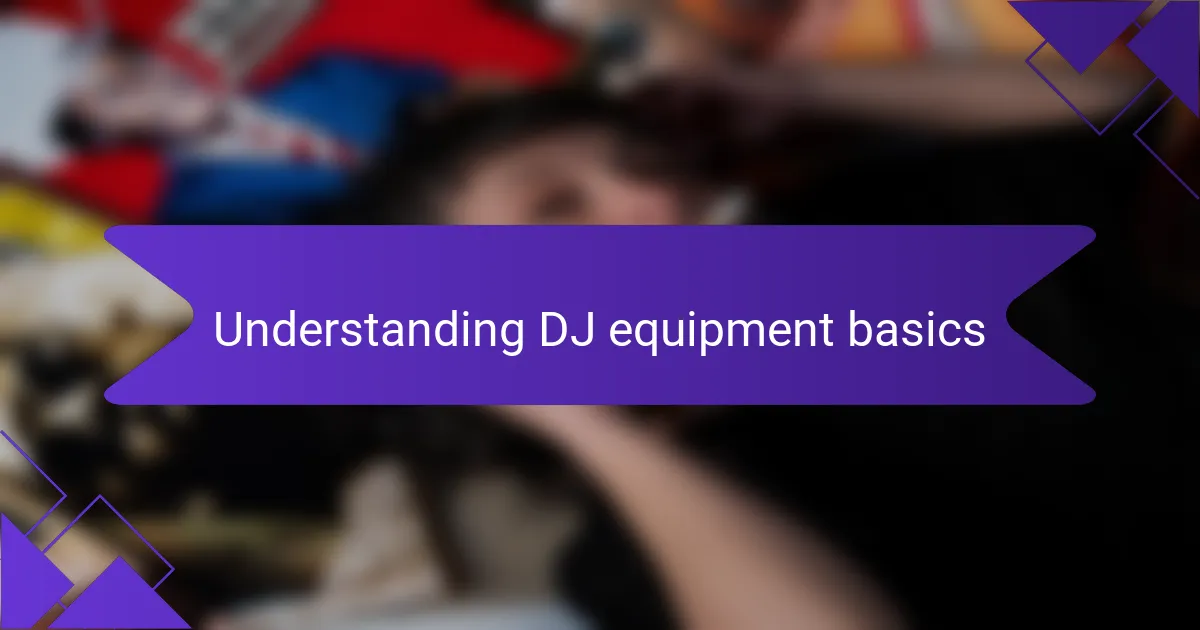
Understanding DJ equipment basics
Understanding the basics of DJ equipment is crucial for anyone looking to step into this exciting world. I still remember the first time I laid my hands on a pair of turntables; the feel of the controls and the sound of the beats resonating from the speakers were exhilarating. DJ equipment typically includes turntables or CDJs for playing tracks, a mixer to blend them together, and speakers to deliver the sound. Have you ever noticed how the right gear can elevate a performance? It’s like having the best tools in a craftsman’s workshop.
Mixers are particularly fascinating because they allow you to manipulate sound in real time. I often tell aspiring DJs that this is where the magic happens; it’s not just about playing songs back-to-back. The way you transition from one track to another can create a powerful dynamic on the dance floor. During a gig, I once seamlessly blended two songs that were completely different in tempo, and the crowd erupted with energy. That moment made me realize the impact of mastering your equipment.
Additionally, not all DJ setups are the same. Some DJs prefer using digital controllers that integrate with software, while others swear by traditional vinyl. I lean toward the tactile feel of vinyl because it connects me to the roots of my craft. What’s your preference? Understanding the nuances of each setup will not only help you choose the right equipment but also foster your unique style as you start your journey as a DJ.
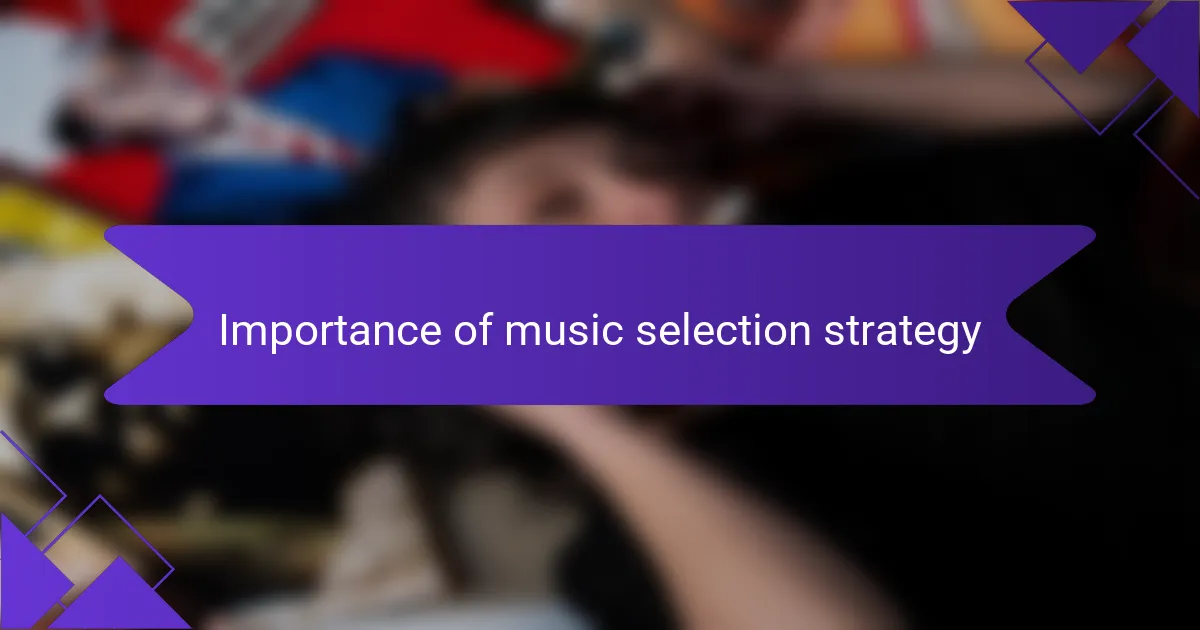
Importance of music selection strategy
Selecting the right music is crucial to the success of any DJ set. I remember a night when I played a diverse mix of genres, and the dance floor felt electric. It highlighted for me that a well-thought-out music selection can not only cater to varied tastes but also keep the crowd engaged throughout the night.
A solid music selection strategy means understanding the ebb and flow of energy throughout an event. I’ve learned to watch for subtle cues in the crowd—what makes them move, what brings them to a standstill, and when they need that next big drop. Have you ever witnessed a crowd collectively lift in excitement when the right song comes on? That’s the power of knowing what to play and when to play it.
Ultimately, the music you choose sets the tone for the entire experience. I often think of it as telling a story; each track adds a new chapter that builds anticipation and emotion. Choosing the right track is like unlocking a door to another level of connection with your audience, and I’ve found that this connection is what truly makes a DJ set memorable.
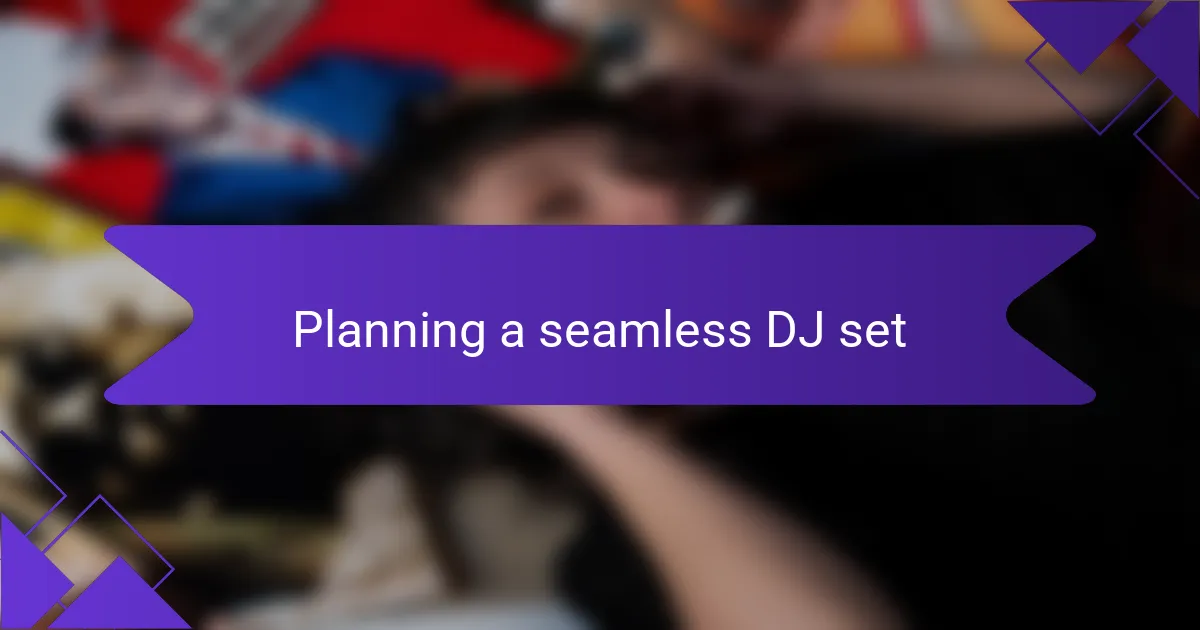
Planning a seamless DJ set
Planning a seamless DJ set requires meticulous organization and foresight. I always start by creating a well-structured playlist that accounts for the venue’s vibe and the audience’s potential mood. Have you ever felt a shift in energy as a particular song plays? This realization drives me to curate tracks that not only complement each other but also elevate the entire experience.
As I plan my sets, I make it a point to practice the transitions. I recall an evening when I smoothly merged two contrasting tracks, and the crowd erupted in joy, turning what could have been a jarring switch into a highlight of the night. These moments remind me of the importance of rehearsal—it’s where I discover the keys and tempos that flow best, ensuring that my performance remains uninterrupted and engaging.
Lastly, I often consider the timing in my planning. It isn’t just about what to play, but also when to play it. I’ve learned through experience that building anticipation is key. Have you ever felt the pressure of waiting for that perfect drop? That sense of suspense can turn a good set into an unforgettable one if timed right. Effective planning allows me to harness that energy and create a journey that keeps everyone on their feet.
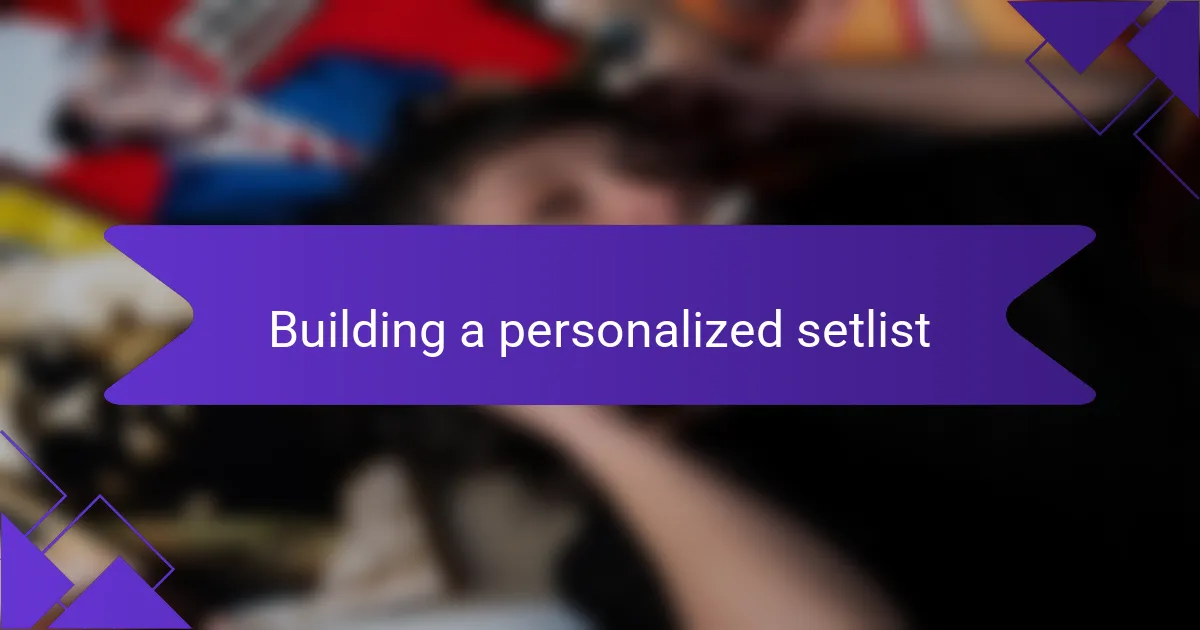
Building a personalized setlist
Building a personalized setlist is an art form that takes time and intuition. I remember the first time I curated a set for a crowd that felt just right; it was exhilarating. The right mix of tracks not only excites the audience but also reflects my unique style and passion.
When I create a setlist, I focus on the vibe of the event and the audience’s energy. I spend hours digging through my collection, finding tracks that resonate with me and will ignite something special in the crowd. For instance, at a recent outdoor festival, I weaved in classic hits with some underground gems—this blend really connected with the crowd and made for an unforgettable experience.
To help illustrate the components of a personalized setlist, here’s a simple comparison of different approaches:
| Traditional Setlist | Personalized Setlist |
|---|---|
| Predictable sequence of tracks | Dynamic flow based on audience reactions |
| Standard genre selections | Unique genre fusions and surprises |
| Fixed duration | Flexible length depending on the vibe |
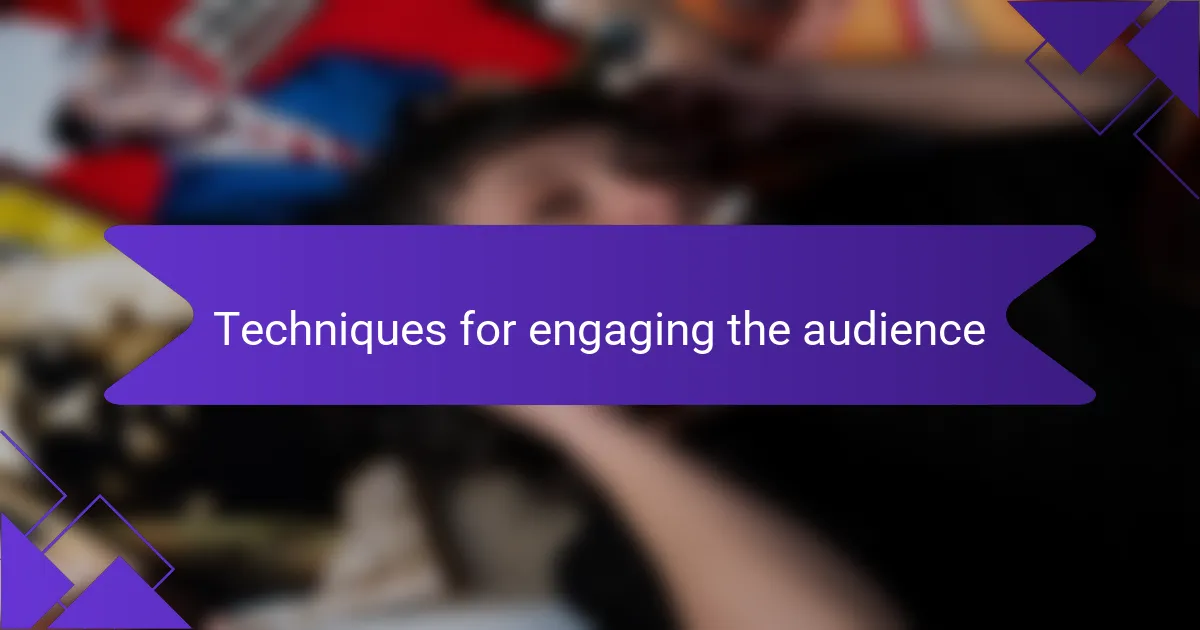
Techniques for engaging the audience
When I’m on stage, my primary goal is to connect with the audience. From my experience, crowd engagement is all about reading the room and reacting in real-time. I remember one event where I intentionally shifted the vibe mid-set after noticing the audience’s energy drop. It transformed the entire atmosphere and re-energized the crowd, reminding me just how vital it is to stay present and adaptive.
To effectively engage your audience, consider these techniques:
- Read the Room: Pay attention to the crowd’s energy and adjust your set accordingly.
- Create a Story Arc: Build your set like a story, leading them through peaks and valleys of emotion.
- Use Call and Response: Encourage the audience to interact, such as singing or chanting along.
- Incorporate Visuals: Use lighting and visuals to complement the music and enhance the experience.
- Encourage Movement: Play tracks that invite dancing, sparking a collective energy that’s palpable.
- Stay Authentic: Share your genuine excitement for the music; this can be infectious and pull the audience in.
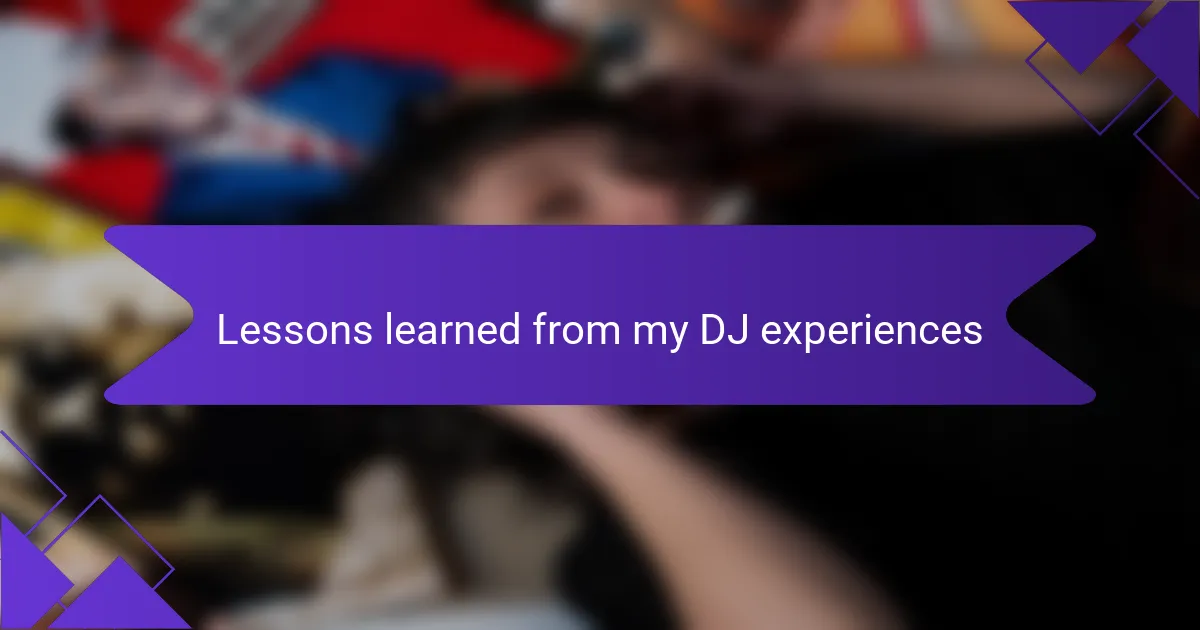
Lessons learned from my DJ experiences
One of the most significant lessons I learned from my DJ experiences is the importance of reading the crowd. I remember one night when I initially played a set that I was excited about, only to realize that the audience wasn’t responding as I had expected. This taught me to stay flexible and be attuned to their energy. It’s essential to adapt and pivot when you see people start to lose interest; their reaction guides the night’s direction.
Another key takeaway is the power of preparation mixed with spontaneity. I once spent weeks crafting the perfect playlist for a festival gig, but once I was on stage, a sudden rainstorm changed everything. I had to quickly shift gears, mixing in more upbeat tracks to keep spirits high despite the weather. This balance of being prepared while allowing room for improvisation has ultimately enriched my sets and kept the vibe alive.
- Always stay aware of the crowd’s mood and energy.
- Be ready to adapt your set based on audience reactions.
- Preparation is key, but spontaneity can lead to memorable moments.
- Keep an open mind; sometimes the unexpected leads to the best experiences.
- Connect with fellow DJs to share insights and tips for growth.
